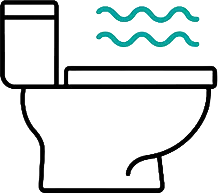
Spinal Cord Injury
Step into a new era of healing at Infinity Stem Cells, where cutting-edge science meets the body’s innate potential. Our advanced cell regeneration therapies, centered on mesenchymal stem cells (MSCs), harness the transformative power of cellular renewal to address a wide range of conditions, restoring vitality and igniting wellness from within.
|
|
|
|
|
|
|
What is Spinal Cord Injury
Spinal Cord Injury (SCI) occurs when the spinal cord is damaged, either through trauma (such as accidents, falls, or violence) or non-traumatic causes like infections or tumors. The spinal cord is the communication highway between the brain and the rest of the body, and when it's injured, it can lead to partial or complete loss of movement, sensation, and bodily function below the site of injury.
SCI can be complete (total loss of function) or incomplete (some sensation or movement remains). The effects depend on the location and severity of the injury, with higher injuries typically resulting in more serious impairments.

What Are the Symptoms?
Symptoms of SCI vary based on the type and level of injury, but may include:

Loss of movement or muscle control

Numbness or loss of sensation

Inability to feel heat, cold, or touch

Difficulty breathing or coughing

Loss of bladder or bowel control

Pain or pressure in the neck, back, or head
Current Treatments
for Spinal Cord Injury
While there’s no cure for SCI, treatment focuses on protecting the spine, restoring function, and supporting recovery:
Emergency care helps stabilize the spine and reduce inflammation.
Rehabilitation includes therapy and assistive devices to improve mobility and independence.
Medications manage pain, muscle spasms, and bladder control.
Mental health support helps with emotional adjustment.
Home modifications improve safety and daily living.
What Are the Outcomes?
The long-term outcome depends on the severity and location of the injury. Some individuals recover partial function, especially with incomplete injuries, while others may face lifelong paralysis and complications.
With ongoing therapy, adaptive devices, and strong support systems, many people with SCI can lead active, fulfilling lives. Advances in technology and care continue to improve outcomes and opportunities for independence.
Stem Cell Therapy for Spinal Cord Injury
Stem cell therapy is a rapidly developing area of research offering hope for SCI recovery. This approach aims to regenerate damaged spinal tissue, reduce inflammation, and promote nerve repair using mesenchymal or neural stem cells.
Potential Benefits:
Repair or regeneration of nerve fibers
Restoration of some motor or sensory function
Reduction of scar tissue and inflammation
Delay or reversal of further spinal deterioration
Currently, stem cell therapy for SCI is experimental, with ongoing clinical trials showing promising—but not yet conclusive—results. Patients interested in this approach should consult with specialists and explore participation in regulated studies or clinical programs.
Science, Simplified: Our Therapy Process
It’s important to note that stem cell therapy for autism is still experimental, and not approved as a standard treatment. Families should consult healthcare professionals and thoroughly research clinical trial options.
Site
Target
Depth
Forehead & Eyes
Cheeks & Jawline
Under-Eye Area
Full Face
Wrinkles, crow’s feet
Volume loss, elasticity, hydration
Dark circles, fine lines
Texture, glow (via microneedling)
1–2 mm (superficial dermis)
2–4 mm (deep dermis)
1–1.5 mm (cautious use)
0.5–1.5 mm

Why Consider
Stem Cell Therapy?
Non-surgical and outpatient
Focuses on long-term healing, not just symptom relief
Supported by early-stage clinical research
Ethically sourced, high-quality regenerative cells
Find Out If You're a Candidate >>
Talk to an Expert >>
Explore the Science Behind It >>
Frequently Asked Questions
Is this FDA-approved?
Stem cell therapies using ethically sourced regenerative cells are regulated under strict guidelines by the FDA. While certain applications have explicit FDA approval, others are administered under FDA guidelines as investigational therapies, complying fully with regulatory standards to ensure safety and quality.
What are the risks or side effects?
Stem cell therapy is generally safe with minimal risk. Common mild side effects can include temporary soreness, swelling, or minor bruising at the injection site. Rarely, more serious complications such as infections or allergic reactions can occur. Our medical team thoroughly evaluates each patient to minimize these risks.
How long until I feel results?
Patients often notice initial improvements within days to weeks, with more substantial benefits progressively occurring over the following months as the regenerative process continues. Individual experiences can vary depending on the condition's severity and personal health factors.
How many sessions are required?
Many patients experience significant improvements after a single session. However, depending on individual conditions and response to treatment, additional sessions may be recommended to maximize outcomes. Our specialists provide personalized recommendations during your consultation.
Is this covered by insurance?
Insurance coverage varies depending on the specific policy and condition being treated. While regenerative therapies are not universally covered, some plans offer partial or full coverage. Our administrative team will assist you in verifying insurance coverage and exploring financial options to support your treatment.
Connect with Us
Quick Links
Copyright© 2025 Scientific Infinity - All Rights Reserved.
